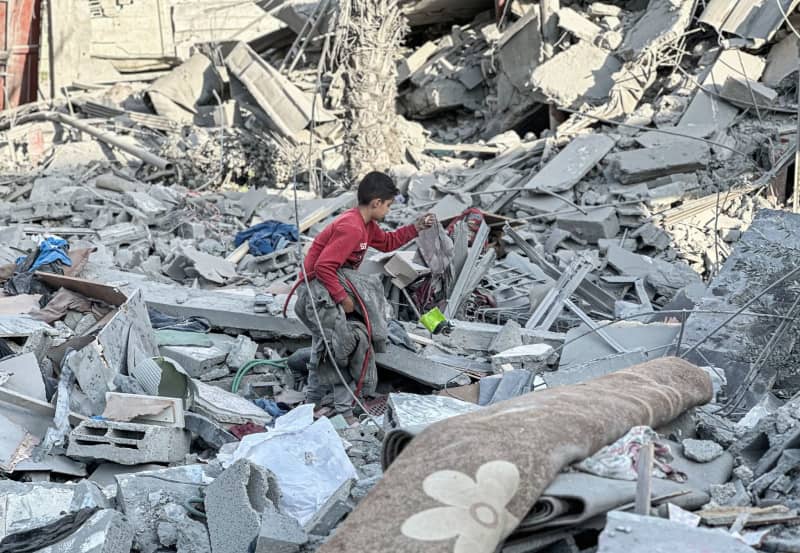On Thursday, fresh Israeli airstrikes in northern Gaza resulted in the death of at least 12 individuals and left approximately 30 others injured, according to the Palestinian news agency WAFA. The strikes reportedly targeted a former school building in the Al-Shati refugee camp that was being used as a shelter for displaced persons. The ongoing conflict has prompted the Israeli military to acknowledge that they are investigating these reports, although the details surrounding the casualties could not be independently verified. The repeated military actions have escalated tension in the area, intensifying fears among residents who are already grappling with the repercussions of relentless warfare.
In response to the growing violence, an Israeli military spokesperson called on people in Al-Shati and neighboring areas of Gaza City to evacuate, underscoring the danger of being in what has become a significant combat zone. The military asserts that terrorist factions are actively launching rockets toward Israel from these regions, contributing to the volatile situation. This dynamic of escalating hostilities has ignited concerns among international observers regarding the safety and humanitarian conditions for civilians caught in the crossfire.
As the conflict continues to unfold, WAFA reported additional casualties across different parts of the Gaza Strip, extending the grim toll of the day. The southern city of Rafah and the Jabalia refugee camp in the north both reported multiple casualties. Furthermore, at least 10 Palestinians were confirmed dead in the central Nuseirat refugee camp amidst this surge of violence. The widespread fatalities highlight the indiscriminate nature of the attacks and the precariousness of civilian life in the Gaza Strip, where regular military operations have heightened the urgency of the humanitarian crisis.
Photographic evidence from the Nuseirat refugee camp showcased the destruction and chaos that ensued following the airstrikes. Residents were seen assessing the damage to their homes and community structures, revealing the long-term psychological and social impacts that such military actions can inflict on local populations. Such scenes of devastation are becoming increasingly common as Israel intensifies its military response against Hamas militants, who are positioned throughout the territory.
The conflict between Israel and Hamas has deep historical roots and has seen various escalations over the years, but the current situation presents particular challenges for civilians. Many displaced individuals are seeking temporary refuge in facilities like the one targeted in Al-Shati, only to find themselves further endangered by military actions. With infrastructure already compromised from years of conflict, the availability of safe shelter and basic services is quickly diminishing, compounding the humanitarian crisis faced by many in the region.
As the situation develops, both Israeli and Palestinian authorities are observing closely, albeit with significant limitations on communication and the flow of information. The ongoing violence, marked by retaliatory strikes and military warnings, casts a long shadow over possibilities for dialogue or ceasefires. The grim reality on the ground continues to evoke concern from the international community, as efforts to address humanitarian needs and promote peace remain complicated amidst the prevailing atmosphere of conflict and mistrust.

